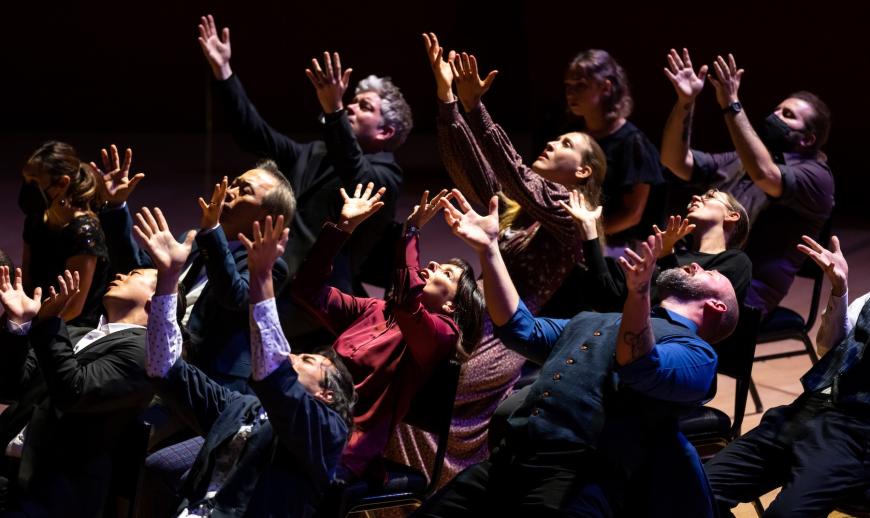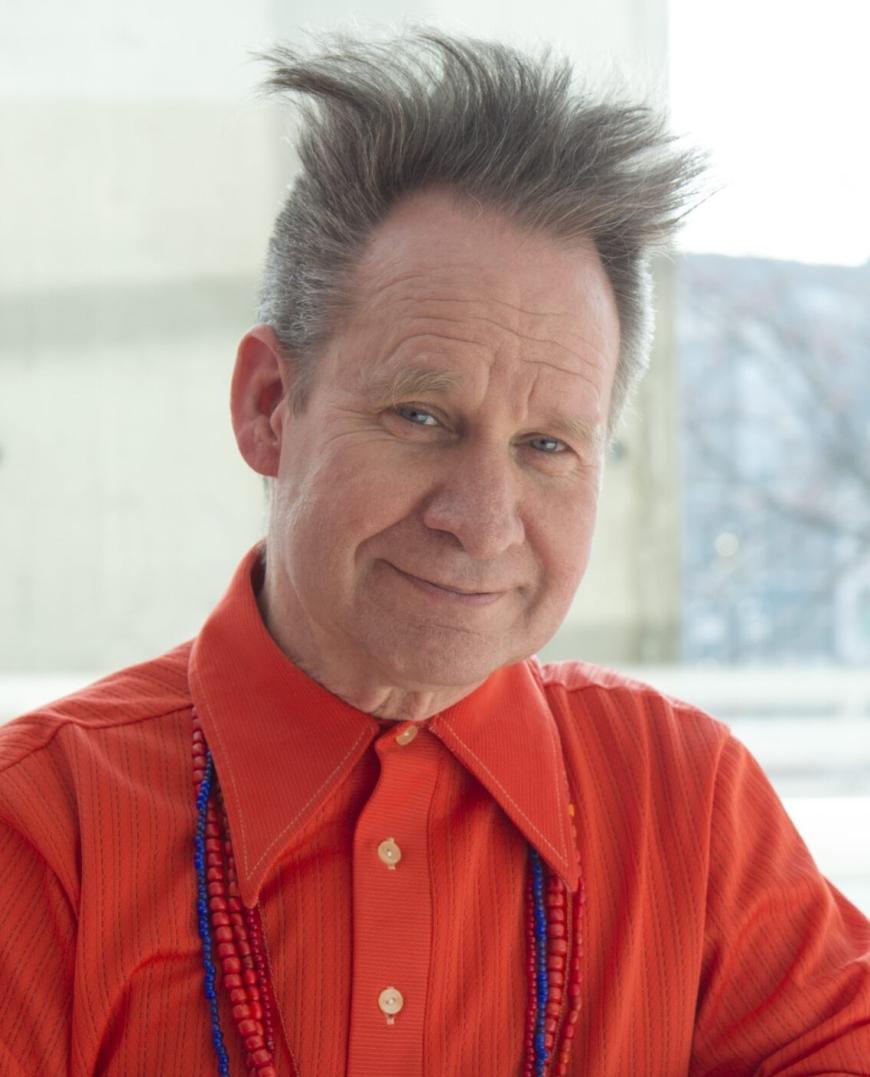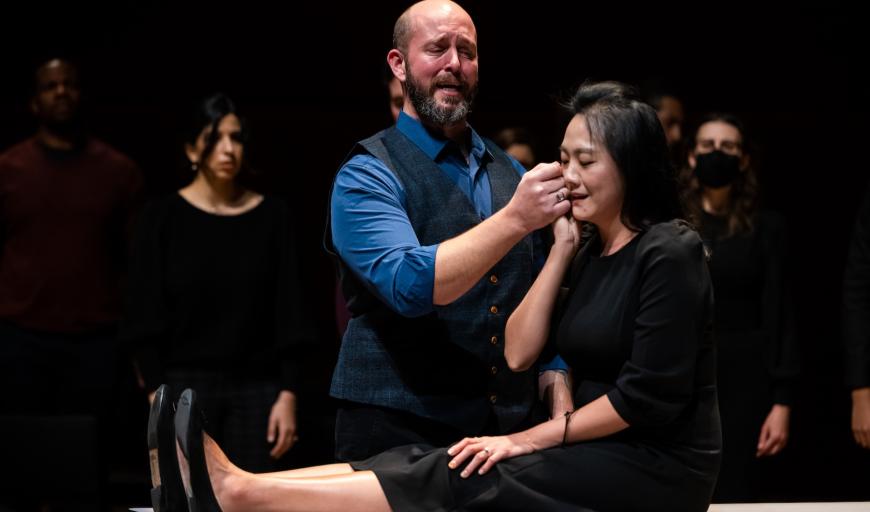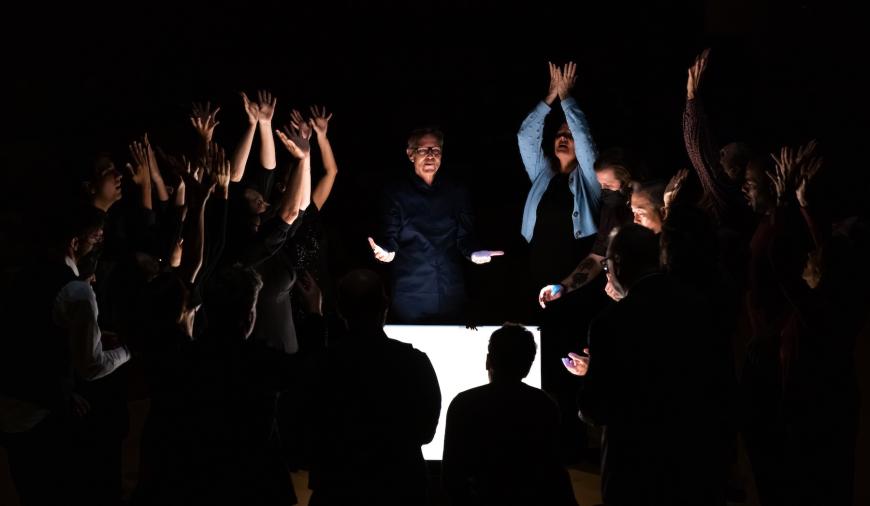
Operas are routinely produced in contexts far from their creators’ original intentions — witness San Francisco Opera’s current production of Richard Wagner’s Lohengrin, where medieval chivalry has been reconfigured as modern militarism. Such a transformation is rarely applied to concert music, but the Los Angeles Master Chorale’s appearance on Saturday at Cal Performances offered a 17th-century choral masterpiece radically refigured as a deeply moving theatrical experience.
In 1635, as the Thirty Years’ War continued to ravage Germany, Heinrich Schütz commemorated the death of his patron, Heinrich, prince of the small state of Reuss. The result was Schütz’s best-known work, the Musikalische Exequien (Funeral music). With resources scarce due to the war, Schütz kept the piece logistically simple — a few soloists and a small chorus, accompanied only by a cluster of continuo (bass line) instruments.
But the piece he wrote is far from spare in emotion. Declining the usual option of setting the text of the medieval requiem Mass — formal, grand, and often terrifyingly remote — Schütz instead used short biblical texts that focused on grief, consolation, and forgiveness. In keeping with Lutheran values of accessibility, the selections were not in liturgical Latin but in German. Making it even more personal, the texts had been chosen by the prince himself to be inscribed on his coffin as well as sung at his funeral.

In the Master Chorale’s performance, titled Music to Accompany a Departure, Schütz’s Musikalische Exequien became a fully realized — yet still appropriately spare — operatic experience. Staged by the gifted director Peter Sellars, whose work is familiar to Bay Area audiences, the production took place on a nearly bare stage, adorned simply with chairs and a table. In the silence before the music began, two dozen singers, in a variety of contemporary dress, slowly assembled, as if coming to a memorial service. Touching, shaking hands, hugging, some bent in grief and others more stoic, they eventually sat in the chairs, as if awaiting the eulogy.
When the music started, it took us from modern realism to a passionately emotional world imbued with the eerily familiar strangeness of great opera. Singing from memory, the excellent members of the Master Chorale moved about the big stage of Zellerbach Hall with stately intentionality, enacting simple, telling gestures of grief that opened up far beyond the conventions of a memorial service: hands uplifted in hope, bodies crumpled in sorrow, tentative caresses by the living for the departed.
Artistic Director Grant Gershon unobtrusively circulated among the singers, lightly conducting both them and the sensitive instrumental accompaniment by Lisa Edwards on portative organ and Eva Lymenstull on viola da gamba. Excellent English supertitles brought out the meaning and impact of the sung German text.
Much of the first part of the Musikalische Exequien works by alternating between a full choir sound and ensembles of two or three solo voices. These smaller episodes were staged as intimate farewells; one soloist lay down upon a table to represent the deceased, and one or two others clustered about, mourning them with close, personal gestures of regret, abandonment, guilt, and love. In the strange realism that opera brings, the dead sang with the survivors, sometimes still lying on the table and other times rising up.

In these duets and trios, Schütz wrote music of passionate affiliation, linking individual voices around the contrasts and connections between death and life. His music is unforgettable in its use of insistent, long-drawn-out dissonances that eventually subside into beautiful consonance. One of the most telling moments was the tenor duet “Wenn eure Sünder gleich blutrot wäre” (Even if your sins were blood-red), where clashing semitone intervals and anguished gestures evoked the painful finality of death yet here were followed by healing and forgiveness, with those remembered “sins” refigured to be as white as snow or as new as soft wool.
The original music lasts barely a half hour in performance; here, it was expanded some threefold. The continuous modulations and imitations that characterize Schütz’s musical language abruptly stopped again and again. The long silences that interrupted the music gave us a chance to let each phrase resonate, to consider its particular form of grief. But that theatrical impact came at the expense of the fluid and energetic Baroque rhythms of the original. The damping of the musical flow worked well in the first half of the performance but began to lose its effectiveness later on — especially in a long pause between movements when the singers moved chairs off the center of the stage with no perceptible thematic intention.

Schütz’s final section sets an earthly choir in dialogue with a beautiful trio of angelic voices. For this part, the action moved from the memorial service to a cemetery, where the chorus gathered around an empty grave from which an ethereal light seemed to glow. (The whole production was graced by James F. Ingalls’s remarkable lighting design.) Meanwhile, a semichorus sang “Selig sind die Toten” (Blessed are the dead) from high up in Zellerbach’s balcony, the text (from the Book of Revelation) familiar to us from Johannes Brahms’s much later setting of it in A German Requiem.
Throughout the production, it was consolation and connectedness among the living that came through as the ultimate message of this music for a departure — a welcome catharsis for so many recent losses in pandemic isolation, terrorist madness, and wartime desolation.
The production premiered in Los Angeles last fall and came to Zellerbach as part of a tour that also included the University of Illinois Urbana-Champaign. Bay Area audiences will have another chance to see it this April at Stanford’s Bing Concert Hall.




